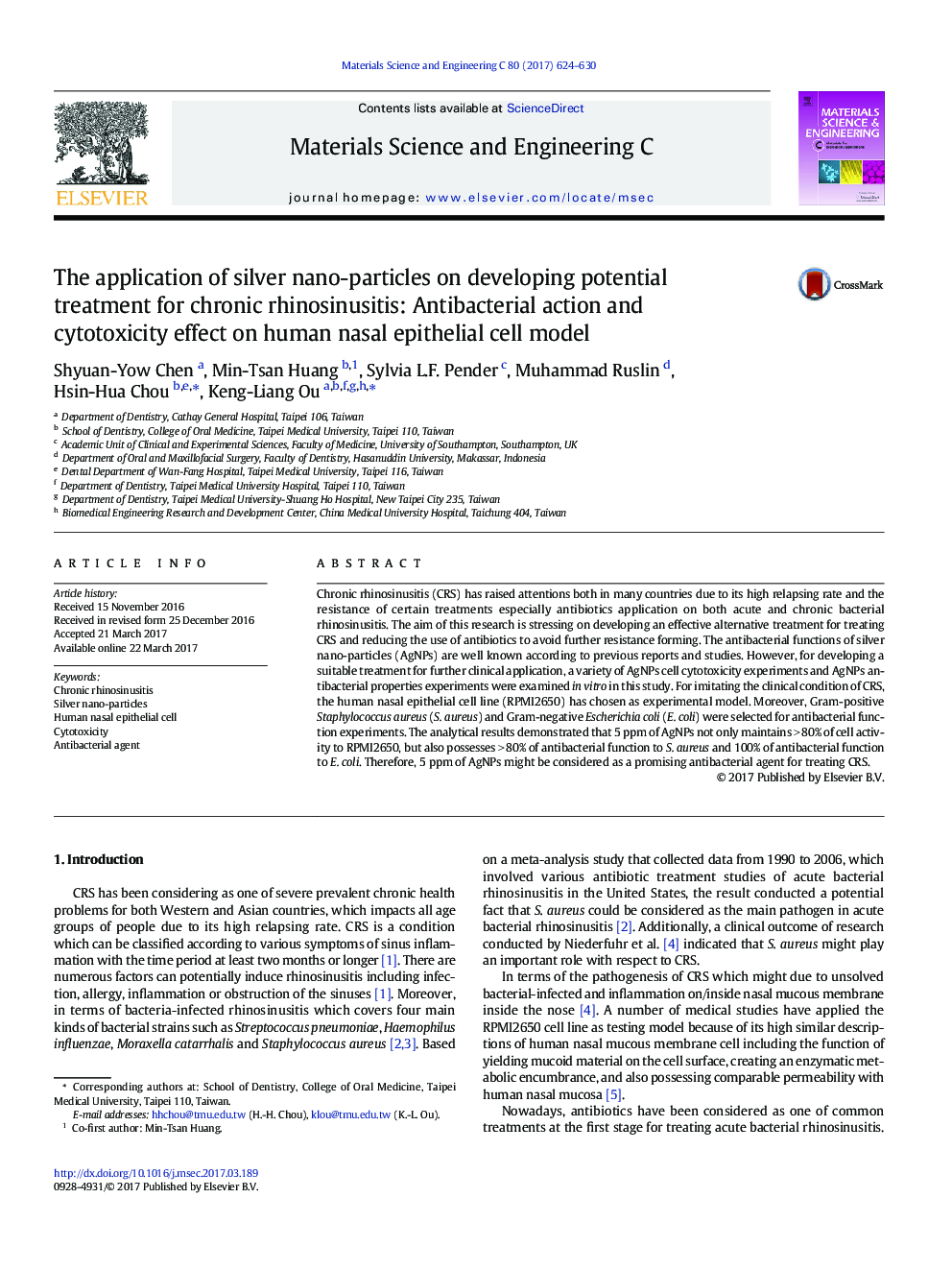| Article ID | Journal | Published Year | Pages | File Type |
|---|---|---|---|---|
| 5434359 | Materials Science and Engineering: C | 2017 | 7 Pages |
â¢The 10 nm silver nano-particles (AgNPs) could penetrate cell membrane into RPMI2650 cell.â¢The 5 ppm of AgNPs had better biocompatibility on RPMI2650 cells.â¢The 5 ppm of AgNPs possessed 80% of antibacterial effect on S. aureus.â¢The 5 ppm of AgNPs is a promising antibacterial agent for treating chronic rhinosinusitis.
Chronic rhinosinusitis (CRS) has raised attentions both in many countries due to its high relapsing rate and the resistance of certain treatments especially antibiotics application on both acute and chronic bacterial rhinosinusitis. The aim of this research is stressing on developing an effective alternative treatment for treating CRS and reducing the use of antibiotics to avoid further resistance forming. The antibacterial functions of silver nano-particles (AgNPs) are well known according to previous reports and studies. However, for developing a suitable treatment for further clinical application, a variety of AgNPs cell cytotoxicity experiments and AgNPs antibacterial properties experiments were examined in vitro in this study. For imitating the clinical condition of CRS, the human nasal epithelial cell line (RPMI2650) has chosen as experimental model. Moreover, Gram-positive Staphylococcus aureus (S. aureus) and Gram-negative Escherichia coli (E. coli) were selected for antibacterial function experiments. The analytical results demonstrated that 5Â ppm of AgNPs not only maintains >Â 80% of cell activity to RPMI2650, but also possesses >Â 80% of antibacterial function to S. aureus and 100% of antibacterial function to E. coli. Therefore, 5Â ppm of AgNPs might be considered as a promising antibacterial agent for treating CRS.
